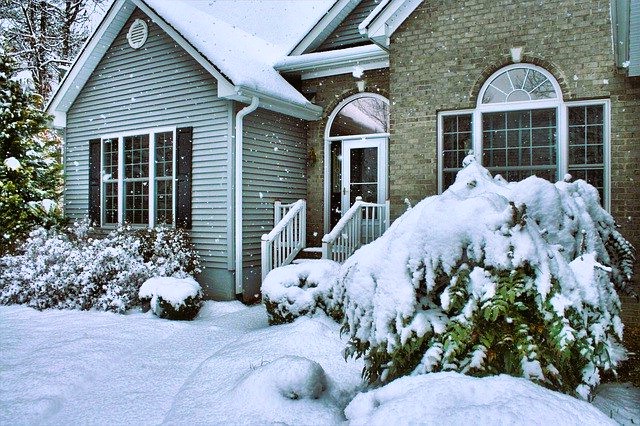Home inspections are crucial steps in the process of buying or selling a home, providing valuable insights into the property’s condition and helping to identify potential issues that may need attention. However, the time of year when a home inspection takes place can have a significant impact on the inspection process and the findings. Seasonal changes, such as weather conditions and environmental factors, can affect various aspects of a home, presenting unique challenges and considerations for home inspectors and homeowners alike. In this article, we’ll explore the impact of seasonal changes on home inspections and what both inspectors and homeowners need to know.
Spring
Spring is a popular time for home inspections, as it coincides with the peak real estate season when many buyers are actively searching for homes. However, springtime weather can present challenges for inspections, including:
- Thawing and Drainage Issues: Spring thaw can result in melting snow and ice, leading to water accumulation and drainage problems around the property. Home inspectors must assess the effectiveness of drainage systems, check for signs of water intrusion, and identify potential risks of flooding or moisture damage.
- Roof and Gutter Inspections: Spring is an ideal time to inspect the roof and gutters for damage caused by winter weather, such as ice dams, snow buildup, and wind damage. Home inspectors must carefully examine the roof and gutters for signs of leaks, missing shingles, or debris accumulation that may require repair or maintenance.
- Landscaping and Exterior: Spring brings new growth and foliage, making it easier to assess the landscaping and exterior features of the property. Home inspectors can evaluate the condition of trees, shrubs, and vegetation, as well as the condition of exterior surfaces, siding, and paint.

Summer
Summer is another busy season for home inspections, with longer days and favorable weather conditions for outdoor assessments. However, the heat and humidity of summer can also pose challenges for inspections:
- HVAC System Evaluations: Summer is an opportune time to evaluate the performance of the HVAC (heating, ventilation, and air conditioning) system, as homeowners rely on air conditioning to stay comfortable. Home inspectors can test the cooling capacity, airflow, and efficiency of the HVAC system and identify any issues that may affect its performance. Do you like the article? Read also about Solving asbestos-related problems.
- Exterior Maintenance: Summer is a critical time for exterior maintenance, including painting, sealing, and repairs. Home inspectors can assess the condition of exterior surfaces, decks, patios, and fences, noting any signs of wear, damage, or deterioration that may require attention.
- Pest Inspections: Summer is peak season for pests, including insects, rodents, and wildlife, which may seek refuge in homes during hot weather. Home inspectors must be vigilant for signs of pest infestations, such as droppings, nesting, or damage to wood structures, and recommend appropriate measures for pest control and prevention.
Fall
Fall is a transitional season marked by cooler temperatures, changing foliage, and preparation for winter weather. Home inspections in the fall may encounter the following considerations:
- Preparation for Winter: Fall is an opportune time for homeowners to prepare their properties for winter weather, including cleaning gutters, sealing windows, and insulating pipes. Home inspectors can advise homeowners on seasonal maintenance tasks and identify any deficiencies that may affect the home’s winter readiness.
- Heating System Evaluations: As temperatures begin to drop, homeowners rely on heating systems to keep their homes warm and comfortable. Home inspectors can assess the condition, efficiency, and safety of heating systems, including furnaces, boilers, and fireplaces, to ensure they are functioning properly and pose no safety hazards.
- Outdoor Inspections: Fall foliage can obscure views of the property and make it challenging to assess landscaping, drainage, and exterior features. Home inspectors must carefully navigate the property, clearing away debris and foliage to access critical areas and conduct thorough inspections.
Winter

Winter inspections present unique challenges due to cold temperatures, snow, and ice, which can affect accessibility and safety. However, winter inspections can still provide valuable insights into the property’s condition:
- Indoor Assessments: Winter inspections may focus more on indoor assessments, including heating systems, insulation, windows, and indoor air quality. Home inspectors can evaluate the effectiveness of insulation, detect drafts or air leaks, and ensure that heating systems are operating efficiently.
- Snow and Ice Hazards: Snow and ice can create hazards around the property, such as slippery walkways, roof snow loads, and ice dams. Home inspectors must exercise caution when navigating the property and be aware of potential safety risks for themselves and homeowners.
- Accessibility Challenges: Winter weather may limit access to certain areas of the property, such as the roof, exterior surfaces, and outdoor features. Home inspectors may need to reschedule inspections or use alternative methods, such as drones or thermal imaging, to assess hard-to-reach areas safely.
In conclusion, seasonal changes can have a significant impact on home inspections, affecting the inspection process, findings, and recommendations. Homeowners and home inspectors must be aware of the unique challenges and considerations associated with each season and take appropriate measures to ensure thorough and accurate inspections year-round. By understanding the impact of seasonal changes on home inspections, homeowners can make informed decisions about their properties and take proactive steps to address any issues that may arise. For more information on home inspections and seasonal maintenance, visit Wikipedia.

